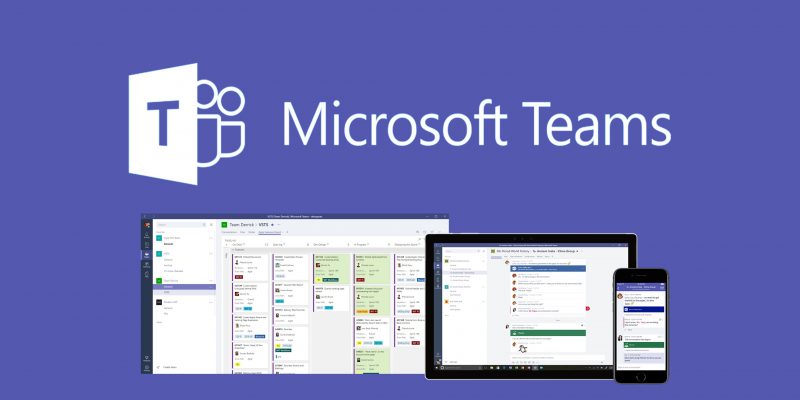Essentially, with Microsoft Teams, users can call upon a variety of key Office 365 apps and tools to help them work more effectively. With teams, you can:
- Use Calendars and meetings (Outlook)
- Create, share, edit and find content (SharePoint, OneDrive and OneNote)
- Call and meet team members (Skype)
- Chat and instant messaging (Skype)
Key benefits of Microsoft Teams
- One centralised hub
- Office 365 integration
- Customise Teams through APIs and bot frameworks
- Enterprise security & compliance
- Azure Active Directory integration
- No extra cost to Office 365 users
Teams and Channels
To start your teamwork collaboration, you need a team. Setting up Teams requires a name and a description; this then allows team members to be added.
Each Team has subsections, which are called Channels. You can have multiple Channels within a Team; for example, you could have a ‘Marketing’ Team and then Channels such as ‘Social Media’, ‘Product Launch’, ‘Blogs’ etc.


Channel Tabs
Each Channel all have their own tabs along the top. Conversation (group chat), Files (shared documents) and Notes (shared OneNote) are automatically created and you can then add your own tabs.
Conversation
Conversations are one of the key features of Teams, allowing each Team to have a centralised discussion that is saved and easily searchable. Conversations are the central component where all teamwork is recorded—from file sharing to video calls.
The use of @mentions allows you to tag participants or even whole teams to notify others.


Files
In your Teams window, you can perform a variety of tasks directly within that window or browser. These tasks include the ability to delete, download, move files, open, copy, edit or get a link to share with others.
You can also start a Group chat alongside the file, to allow team discussions while all working on the files – and this conversation will appear in your Conversation thread.


View team files, edit, upload and create
Notes
Notes takes you to the Team shared OneNote. Within Teams you can view and edit your OneNotes (directly within the Teams window) or you can click to edit in the OneNote app.


Edit within Teams
Adding Tabs
As mentioned, as well as these three automatic tabs you can also add your own, which currently include Planner, Excel spreadsheets, Word documents, Power BI dashboards and more.
Microsoft products can easily be added now, but there are also many future integrations coming to Teams, such as Asana integration. With integration between systems being so vital to teamwork, we can expect to see many more partnerships and out-of-the-box integrations!


Asana Integration
Other Features:
Menu
Along the left-hand side you can navigate to different areas within Teams, such as Chats, Meetings, Files and Activity. Most of these are fairly self-explanatory:
Activities: Shows you the last activities of the Teams that you are part of.
Chat: This holds your Skype for Business conversations, providing a complete chat history. However, for a chat within a Team you should use the Teams menu and hold the group chat in ‘Conversation’.
Teams: An overview of all your Teams that you are part of and allows you to drill-down into each Channel within the Teams. This is also where you can create Teams.
Meetings: The Meetings tab pulls your meetings in from Outlook and also allows you schedule meetings within the Meetings tab that are sent to a Team. If you want to schedule other meetings with external users or individuals, you will still need to use Outlook, as the Teams Meeting tab is only to schedule a meeting with a Team. (Remember the aim is team collaboration, not calendar management).
Files: Within Files you can quickly find and view files across OneNote, OneDrive and within Teams (stored in their own SharePoint sites). There’s also a very helpful ‘Recent’ tab so you can quickly access the latest documents you were working on, as well as a shortcut to your Downloads.






Comments